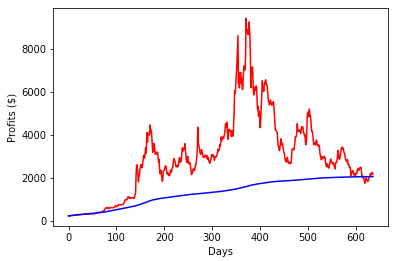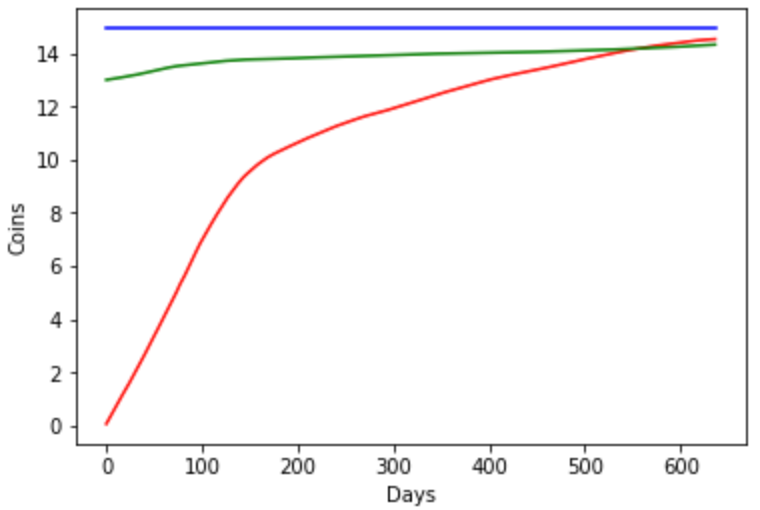Latest news about Bitcoin and all cryptocurrencies. Your daily crypto news habit.
Introduction
Looking in from the outside, cryptocurrency mining can be opaque and confusing. It is intimidating to learn about, to say nothing of trying to determine whether it makes sense to actually participate in. In fact, this is exactly why we started Coinmine — — to make crypto and powering crypto easy. To date, one consistent motivation for at home mining has been something we’ve called “Liberty Crypto” — the ability to secure a sovereign future for yourself and others by participating in the creation of new, non-fiat monies.
In addition to the worthwhile Liberty Crypto motivation for mining, from an economic perspective, mining can be a much better option for accumulating cryptocurrency than buying. With the right framework and models, it can allow people to use their resources to not only acquire cryptos that interest them today, but leave themselves open to new cryptos that should arise in the future.
In this article, we seek to expand thinking around profitability, investment and return on investment in cryptocurrency mining. We hope to clear up confusion, and in the process open up mining to new audiences. We believe better models for calculating the ROI of mining will empower people to make the best choices about how to accumulate and support the cryptocurrencies they believe in.
Specifically, in this article we:
- Review existing models for determining ROI, pointing out some of the challenges in their assumptions
- Provide a new formula for determining ROI of mining over time
- Apply that formula to the example of Zcash to see how mining compares to buying for both token accumulation and USD-based financial return
- Summarize with a set of take-aways that we believe will help people thinking about whether mining is for them
Our findings show that, with the right mental model and time frame, at home mining can be a profitable enterprise that can be better for accumulating coins than just buying.
Note: if you just want to see the math, skip to the “Running the numbers” section.
The Problem With ‘Today’ Based Mining ROI Models
Overall, today’s models for helping people determine the likely ROI of their mining are too simple. For example, they tend to assume constant price, when prices have been anything but constant. The tools for analysis lend to this over-simplification. Most people use online mining calculators to get their current daily profit and extrapolate through the life of the device to determine ROI.
These sites tend to have a specific approach. They’re implicitly using a formula that fixes the variables for network hashrate. When commenters on Twitter and other sites use this formula, they inherently imply that they think prices and hashrate will remain the same forever. This doesn’t account for the fact that both price and hashrate are constantly changing. Inferring future ROI on the basis of today’s numbers seems impossible.
Another challenge is that many models use the US Dollar as the unit of account. While this is fine in the short term as a hedge against the current volatility in the crypto markets, the point of cryptocurrency is not always to exit back to the world of fiat currency. Many crypto-enthusiasts are interested in accumulating as much of a given coin as possible, and have a very long time horizon. We consider the economics of mining coins different than simply buying and selling the underlying assets. These differences allow those with a longer term view of the cryptocurrency landscape to benefit significantly.
Running The Numbers On Mining
We think mining ROI models can be greatly improved upon in a way that makes intuitive sense and is backed with math. In this section, we present a different formula for determining ROI that takes into account different patterns of holding, and then backtest them against Zcash.
We’ll start by assuming D is the amount of times we sell the coin (typically daily), M is the amount of times that we make payments for our expenses (typically monthly), and Payout(d) is the overall network coin payout for a given day d. Let Costs = Rent + electricity + cooling + CapEx. Also, mh is the hashrate for the individual miner, and nh is the overall network hashrate. The revenue in coins over one period of selling is:
Revenue (in coins)
Over the lifespan of the mining hardware, the profits in coins when only selling to cover costs is this:
and in dollars selling daily is this:
A Real World Example in Zcash
Lets try backtesting on a popular chain: Zcash.
For our test, we assumed the purchase of one GTX 1080 miner that started mining on January 1st, 2017. We stop the model at October 1st, 2018 because mining Zcash with a 1080 became far less profitable due to the introduction of ASICs on the Zcash network. But there were other coins that the 1080 could have been switched to for profitable mining. More on this later.
Profits for mining and selling (blue), and mining and holding (red)
Mining and Selling vs. Mining and Holding
First, we compared the profits from two different mining tactics: 1) mining and selling daily (the blue line in the graph above), and 2) mining and holding profits in coins (the red line in the graph above). The red line above represents the profits that a miner would have made on any given day if they sold on that day after holding. For example, if a miner had spent 365 days mining Zcash and sold on their one year anniversary, they would have achieved a profit of $5236.86 outperforming mining and selling daily. For miners who are willing to hold for some duration of time, it is clear that there is more money to be made than from selling every day. We believe that the vast majority of consumer miners have a longer time horizon than daily selling. It doesn’t make sense to apply the daily or even weekly selling model of major mining conglomerates to smaller, individual miners.
Mining vs. Buying to accumulate coins
So far, we’ve discussed mining and ROI with the USD as the unit of account. Many are interested in accumulating as much of a given coin as possible, and have a very long time horizon. The ROI for mining starts negative, rather than at 0 for purchasing coins. This means that miners must have a longer timeframe than a day-trader. Let’s explore the accumulation possible with mining in our first example, mining a new coin, and how mining’s long-termism can act as a hedge against suffering crypto prices.
Now we will look at coin accumulation with 1) mining (red line below) 2) buying at equivalent times as mining (green line below) and 3) bulk purchasing — all CapEx and eventual operating expenses (blue line below). So we will go back to our Zcash back-test we ran and check how many coins we would have from buying all at once, and buying incrementally, and mining and holding.
From this experiment, we can see that over the long term the Zcash coins accumulated for mining are better than buying incrementally. Note that once this experiment stopped, the Gtx 1080 was profitable on other coins, and those profits could have been used to exchange to Zcash. Alternatively, the GTX 1080 could then be sold to buy more Zcash resulting in more total Zcash accumulated via mining and then selling the mining equipment, than either incrementally buying or buying all at once.
New Coins
Typically when a new proof of work coin launches, the emission rate is high, the network hashrate is low, and the market cap is low. The coins for this network may even surge in price due to an immature and illiquid market. In this way, buying a GPU miner is almost like buying a call option on current and future coins that haven’t yet been created. Prospective miners should consider any compelling coins that haven’t launched yet as a premium on top of the existing estimated ROI. One way to account for this new network is to add the premium to all daily profits/revenues after launch. An appropriate percentage for this could be 30% or higher from after launch until the GPU becomes obsolete.
For miners focused on accumulation, there is no better way to accumulate coins than mining on newly launched networks. The earliest miners are powering their favorite new coins when they need it the most, which helps their existing reserves of those coins.
Review & Conclusions
Upon review, a few conclusions stand out:
- When one actually measures ROI from GPU mining over time, it becomes clear that, with the right holding period, mining can not only be more profitable, but can also outperform buying directly as a method of accumulating coins.
- Applying existing ROI models, focused on static price and hashrate expectations — or assuming immediate selling rather than any duration of holding — tend to underestimate the real ROI of mining
- What’s more, those models fail to understand the potential upside from the optionality that comes from investing in mining equipment. If mining one coin becomes unprofitable, due to a factor such as the introduction of ASICs into the ecosystem, that same equipment can be deployed for a different cryptocurrency.
There is still the inherent risk of investment in any speculative asset like cryptocurrencies. And even with easier, more consumer friendly mining rigs coming to market, they still represent an up-front investment.
All of that said, crypto needs your hash power as much or more than your order to buy and sell it. The more people powering crypto, the more secure and valuable crypto becomes and the more liberty, independence and self-sovereignty we achieve. These numbers show that the liberty motivation is actually complemented by a powerful economic incentive as well.
How At-Home Crypto Mining Outperforms Buying Crypto was originally published in Hacker Noon on Medium, where people are continuing the conversation by highlighting and responding to this story.
Disclaimer
The views and opinions expressed in this article are solely those of the authors and do not reflect the views of Bitcoin Insider. Every investment and trading move involves risk - this is especially true for cryptocurrencies given their volatility. We strongly advise our readers to conduct their own research when making a decision.




